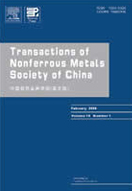Effect of Zr content on crack formation and mechanical properties of IN738LC processed by selective laser melting
(1. State Key Laboratory of Advanced Processing and Recycling of Non-ferrous Metals, Lanzhou University of Technology, Lanzhou 730050, China;
2. School of Materials Science and Engineering, Lanzhou University of Technology, Lanzhou 730050, China)
2. School of Materials Science and Engineering, Lanzhou University of Technology, Lanzhou 730050, China)
Abstract: Two batches of commercial IN738LC alloy powders with different Zr contents were printed under the same parameters. The influences of Zr content (0.024 wt.% and 0.12 wt.%, respectively) in powders on crack density, distribution, formation mechanism and mechanical properties of selective laser melting (SLM)-treated parts were systematically studied. It was found that the crack density (area ratio) increases from 0.15% to 0.87% in the XOY plane and from 0.21% to 1.81% in the XOZ plane along with the Zr content increase from 0.024 wt.% to 0.12 wt.% in the original powders. Solidification cracks are formed along the epitaxially grown á001?-oriented columnar grain boundaries in molten pool center. The ultimate tensile strength of Sample 1 (0.024 wt.% Zr) is 1113 MPa, and there are dimples in tensile fracture. With an increase in the Zr content to 0.12 wt.% (Sample 2), the ultimate tensile strength of Sample 2 decreases to 610 MPa, and there are numerous original cracks and exposed columnar grain boundaries in tensile fracture. The optimization of printing parameters of Sample 2 considerably increases the ultimate tensile strength by 55.2% to 947 MPa, and the plasticity is greatly improved.
Key words: selective laser melting; IN738LC alloy; Zr content; solidification crack; process parameter optimization; mechanical properties

